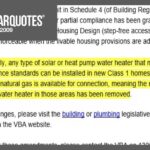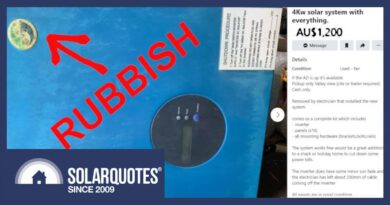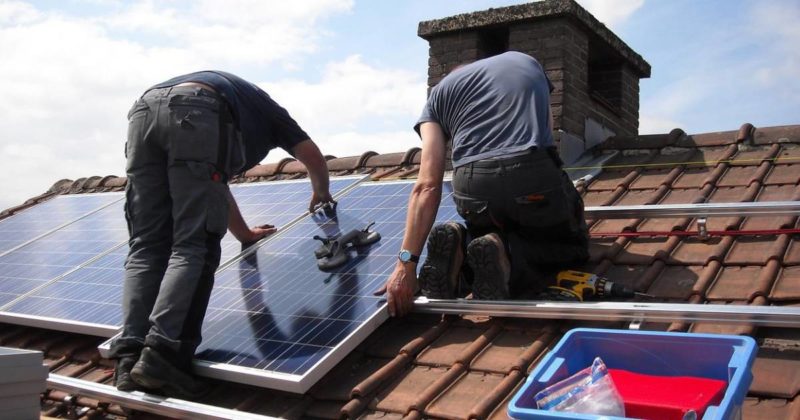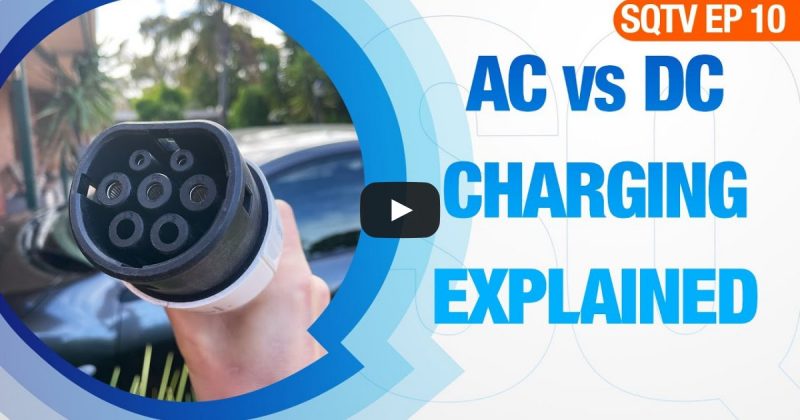Copper Hot Water Systems & Solar: A Timeless Combination
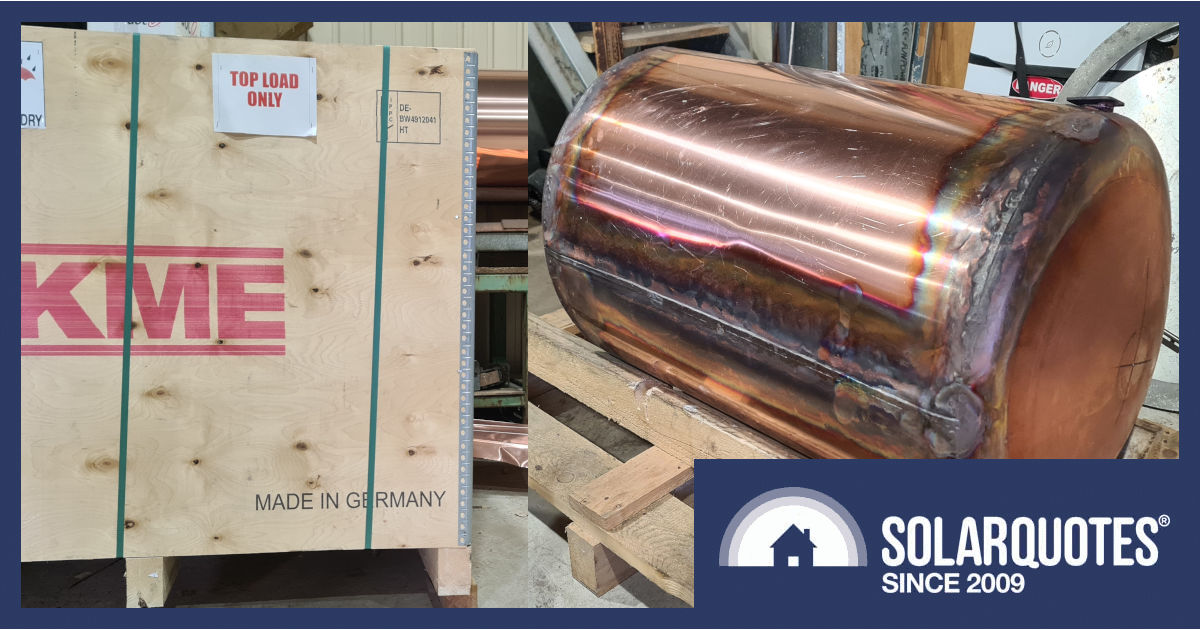
Finally, something that’s genuinely German in the solar industry… sheet copper is no longer made in Australia, sadly.
If we’ve noticed anything of late in the SolarQuotes office, it’s that water heating isn’t just a mundane task; it’s a subject passionately debated and deeply entrenched. Who would have thought?
With all the talk of woke water heaters and the virtue signalling of efficiency, it seems even the most mundane things can be polarised these days. So, it’s not without personal irony I have to mount the case for traditional conservative values—namely, an old-fashioned hot water service made from solid copper.
Durability: It’s The Last Word
Our first hot water service on the farm was installed before mains electricity arrived in 1959 and lasted well into the next century. It outlived the original purchaser. So when I want a hot water service that’s the best thing bar none, I invariably get an all-copper tank, usually custom built by Bill from Gramall, who’s been making them since 1976. He doesn’t have much of a web presence, but his number is 0412 168 184.
A Short History Lesson
Even before there was plumbing, hot water was always tied to the stove in your house, and sometimes still is. However, the Australian climate made having a stove-hot kitchen miserable. Many used a donkey: a tank outside under which you set a fire, and they’re still used in some places.
Some had “chip heaters” that burned kindling or pine cones; when instantaneous hot water meant a bath 20 minutes after you lit the fire. And there were wood, coke and oil-fired kitchen stoves with plumbing for a water jacket. These would be connected to a tank outside the kitchen, or in the roof space.
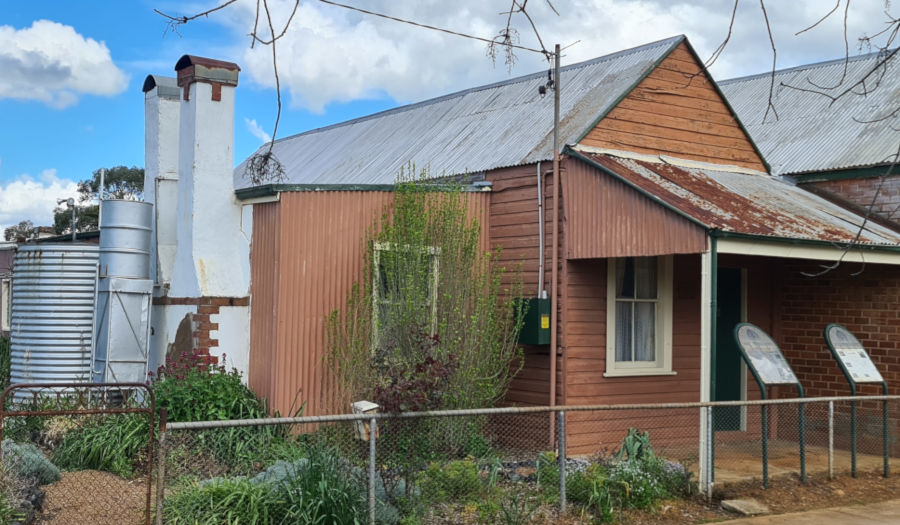
This heritage-listed house in Yeoval, NSW has an original hot water service. Round 44-gallon drum to provide modest pressure, sitting on top of an insulated tank plumbed through the back of the chimney into the kitchen stove.
What Does It Have To Do With Solar Hot Water?
With a tank in the roof storing water you heated with the stove, it wasn’t too much of a leap to put some pipes outside the roof, under a piece of glass, and get the sun to heat the water instead, and so solar thermal hot water was born.
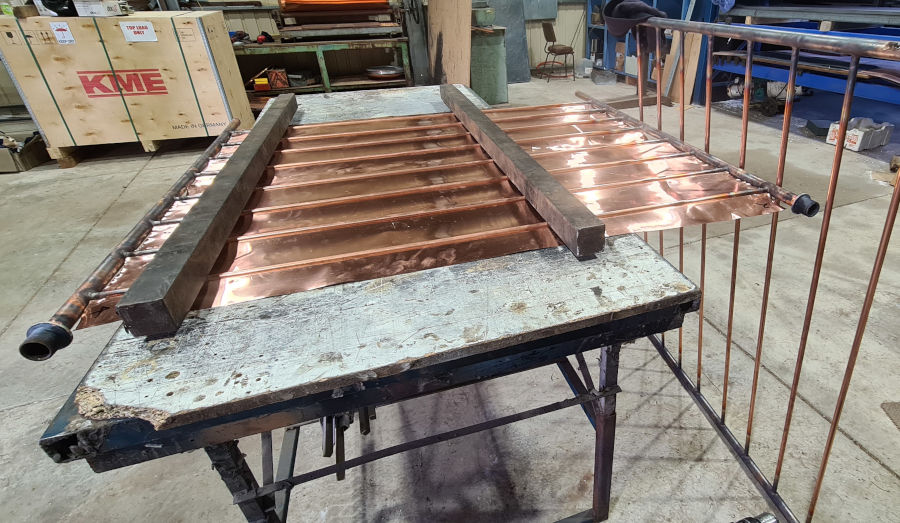
Beasley are long gone, but so well regarded people still want them. Here we see the guts of a traditional flat plate solar thermal collector. 25mm manifolds with 13mm risers and sheet copper to absorb heat and transfer it to the risers. Bill from Gramall is making these as I write.
Thermosiphon Circulation – Just Add Heat
The elegant simplicity of these flat plate systems, (and of the later Solahart close coupled units that came from Western Australia) is that they require no pump. Whether it’s a wood stove or a solar thermal collector, heat rises, and that’s what circulates the water in the tank.
The major downfall of solar thermal hot water, if there is one, is also simple physics. When temperatures fall, freezing water can tear a collector apart. There are solutions, like jackets full of antifreeze, expansion valves and elements, but probably the most novel was an all-plastic hot water service, the (not quite) Genius from the sadly defunct Solco. Most failed under warranty, the rest will last forever.
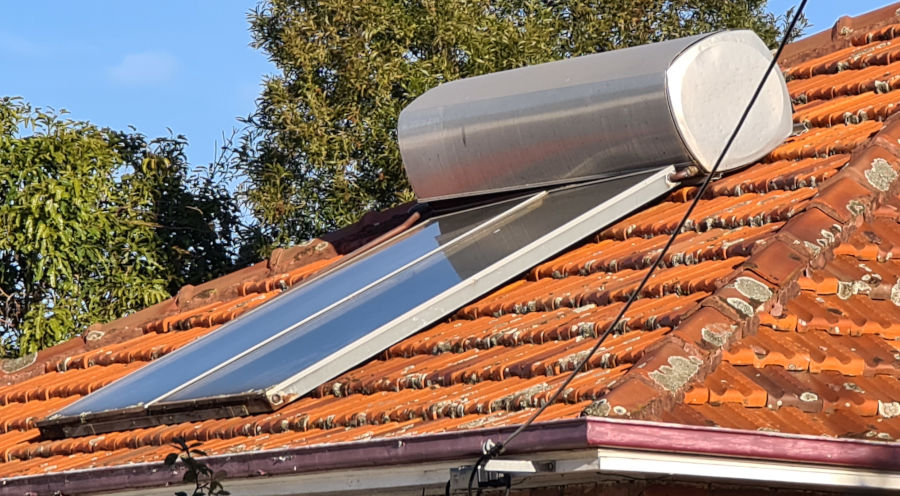
This Solahart would date to around 1978-82, and it’s one of three I know of that vintage still on roofs in Adelaide.
Aren’t We Using Heat Pumps Instead Of Burning Stumps?
Heat pumps are incredibly good at making hot water from a few measly watts of electricity, but heat pumps are complex. A standard heating element is still a perfectly clean way to make water hot if you have lots of surplus solar power.
Using a smaller-than-usual element in combination with a relay controlled by your solar inverter (or an even more precise solar diverter such as a Catchpower Greencatch) means you can still utilise sunshine very effectively, without the complexity of frost protection.
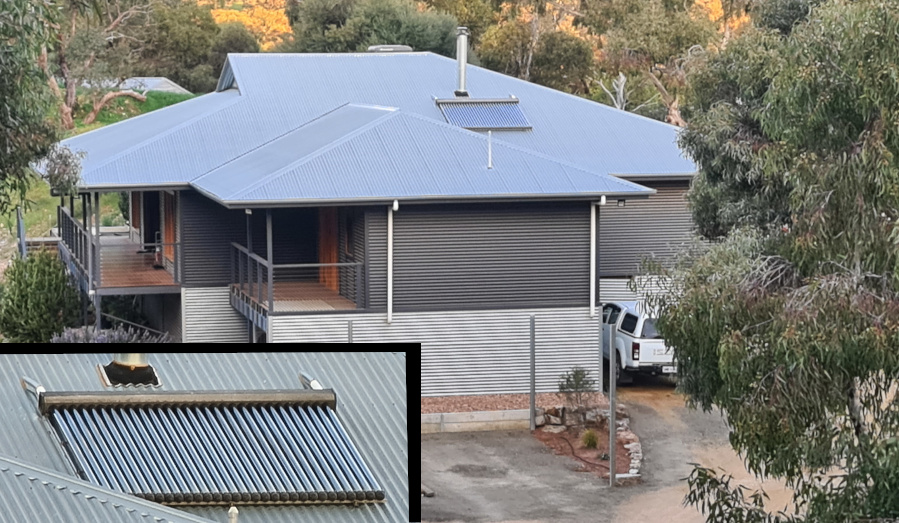
Despite planning to hook up a wood-fired stove, this array of 30 evacuated glass tubes proved so effective it wasn’t needed, plus there are no issues with frost – sometimes a problem in the Barossa Valley.
What Do I Recommend For My Own Mum, Uncle, Best Mates?
There is no one-size-fits-all solution, but the house pictured above was designed with this hot water system from the outset. Sadly, not everyone’s house is suited, but we have reinstated tanks in the ceiling space in a couple of cases because modern solutions were proven wanting. For example, an instant gas unit isn’t compliant when installed next to a window or door.
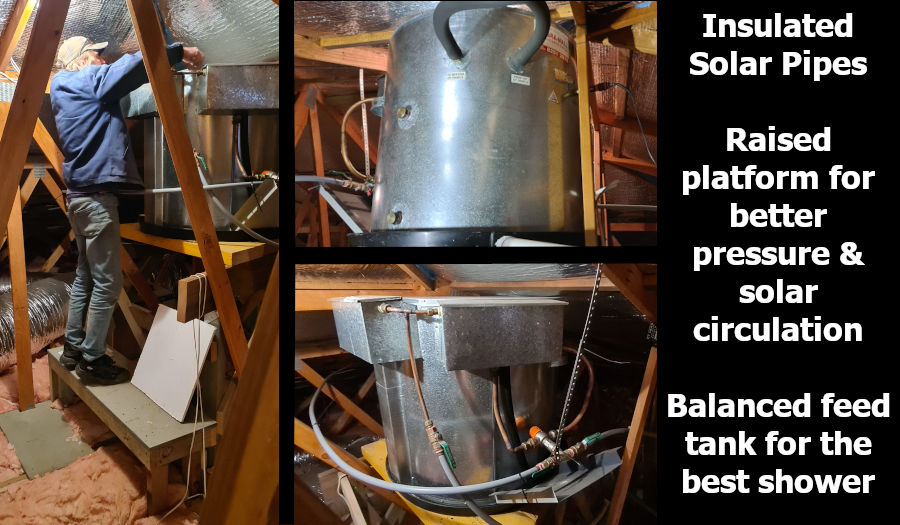
A thing of beauty, complete with attic lighting and step-up for easy service.
Why I Love Copper-Bottomed Hot Water
In no particular order, I’d like to point out;
- Copper hot water tanks are lightweight compared to steel and don’t need the vast manufacturing heat used for glass lining.
- Copper is easily recycled and valuable enough that people ensure it doesn’t get thrown away.
- Placed in the roof space, a tank can be in the middle of your house, reducing draw-off and time wasted waiting for hot water [1 Running hot water to the kitchen of my current house wastes 3 litres of water and the energy to heat it].
- Being inside the house’s envelope is more efficient as you have less standing losses.
- Using the roof keeps your outdoor area neater and saves space, especially precious if you need a wall to hang a home battery on.
- The only wiring is for a perfectly simple thermostat and element.
- Diagnosis and repairs are easy for any plumber or electrician.
It’s As Much About What Isn’t There
- There’s no hot pressure relief valve to leak, replace or blow off 300 litres of water in summer overheating.
- There’s no sacrificial anode to replace. In fact, the only service part is a simple ballcock.
- There are no pumps, sensors or controllers.
- There’s no chance of a gas explosion
- There’s no chance of a BLEV tank explosion.
An exploding water heater can shoot up about 500 feet (150 m) in the air at around 300 miles per hour
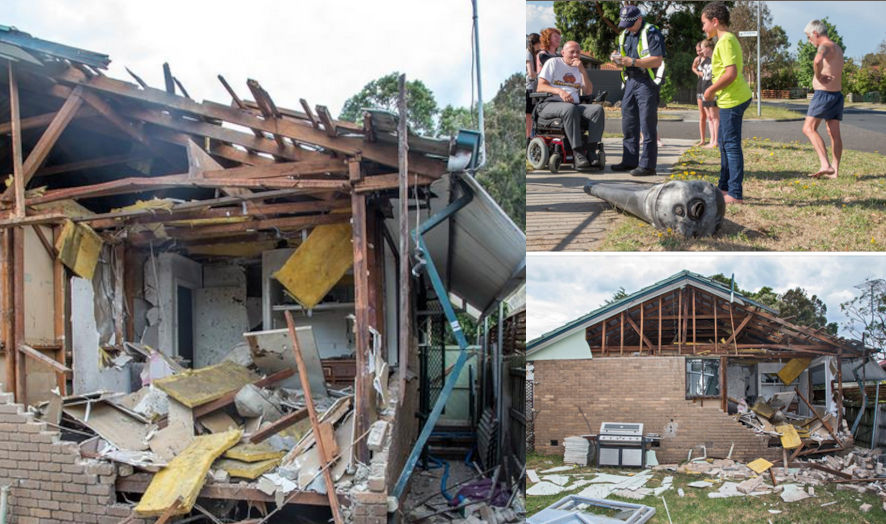
Obviously, this is an outlier, but many people don’t realise that flammable gas isn’t needed, steam alone is enough to demolish a house and launch a tank 200 metres away.
What About The Pressure?
People complain about weak showers from poorly plumbed gravity feed systems, but the excess consumption created by mains pressure means, ironically, we now have laws mandating restrictive plumbing to conserve water, and that demands mains pressure.
When my Mum’s house had to be fitted out for an accessible bathroom, regulations insisted they use modern tapware. Any flickmixer or ¼ turn tap using ceramic inserts will flow very little water if you only have gravity feed. Some hot water units are replaced for this reason alone. Luckily, there is an answer that makes for the most durable hot water service ever.
By installing a 36 metre length of 19mm copper pipe as a heat exchange coil, you can combine the low pressure, low stress durability of traditional copper hot water with the modern need for high pressure delivery.
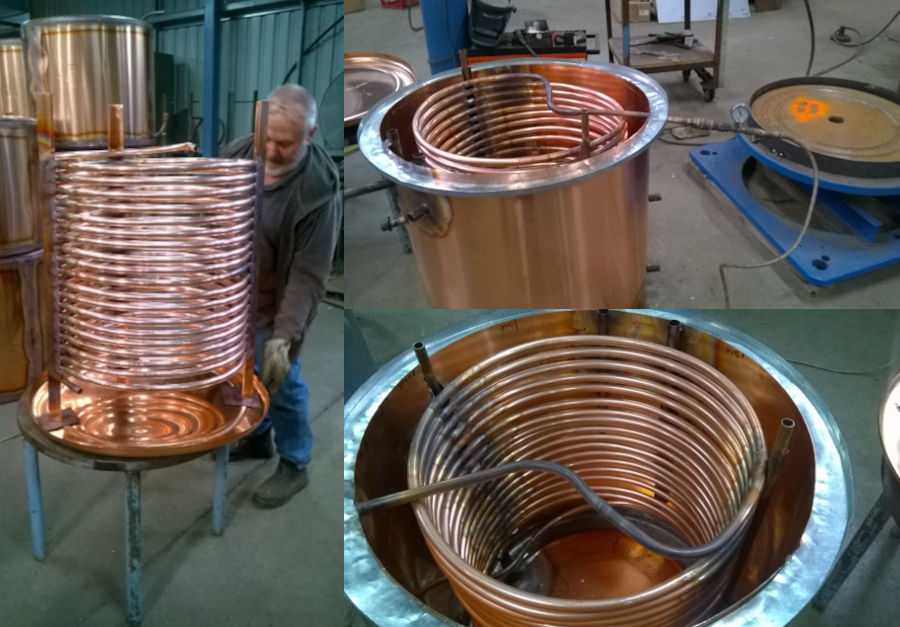
Coiled heat exchanger. A design grand enough that even Kevin Mcleod would be impressed.
Bespoke Beauty
The beauty of a system like this is that it’s flexible. They’re common in Europe and you can choose a variety of methods to heat the thermal mass in the tank:
- solar thermal
- resistive via solar PV
- wood burner
- etc.
Add antifreeze or anti-corrosive solution, plumb it off to heat a towel rail or radiator too, while the potable water simply travels through a perfectly safe and reliable length of pipe.
A standard gravity-fed unit is pretty cheap, but adding heat exchange coils, solar panels and stove fittings, and balanced feed tanks means you’re looking at a few weeks lead time for a custom-built unit. Of course, all these peripheral accessories can add expense too, but if you already have them, it’s a shame to render them useless because your plumber is too lazy to do a decent job.
Hot Water In The Ceiling Is Still An Option
Many plumbers have websites claiming ceiling units are redundant. It’s bullshit.
Be aware you’ll often get advice about what’s profitable for the plumber disguised as what’s good for you. In truth, it’s just cheap and easy to wheel in with a standard tank or an instant gas unit, hook up a few pipes outside and crimp off the old ones in the roof. Pipes seldom get shortened to suit, and in some horror cases the electricity is left connected and the empty tank gets heated for absolutely nothing. True story.
Solar Powered Copper Bottomed Hot Water
Our old Beasley solar thermal unit ran for free 8+ months of the year, but when the roof sheets rusted out, I installed 38kW of PV solar for my Mum. We ran out of roof space for a thermal collector, so we just crush the consumption with electrical sunshine now.
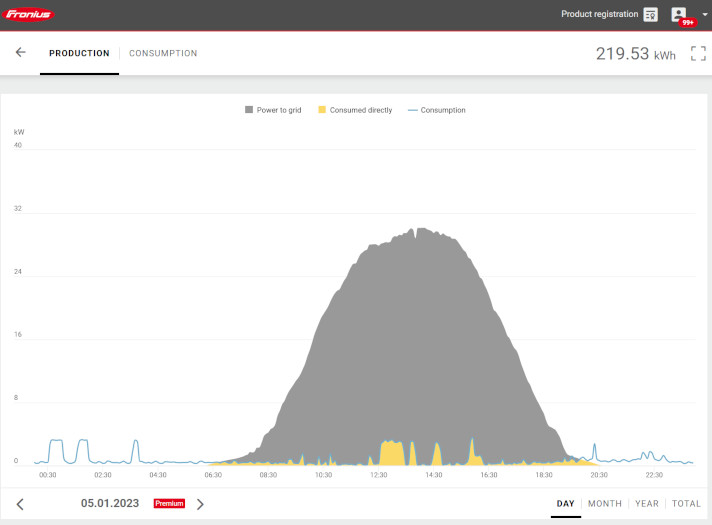
Those little yellow blips are a full-sized 3.6kW hot water element being crushed under a mountain of solar.
Copper hot water isn’t the standard any more, modern truss-built houses aren’t designed for them, and many young buck plumbers simply won’t have experience with handling or opening the roof to change one out1.
If your house had one of these beauties to begin with, there’s a good chance you can reinstate it easily enough, and even power it with surplus solar energy.
In the process, you’ll have supported some grassroots Australian manufacturing and saved all the energy involved in manufacturing, shipping and installing a modern consumer hot water unit.
Footnotes
- Floor-standing units are available ↩
Original Source: https://www.solarquotes.com.au/blog/copper-solar-hot-water/





